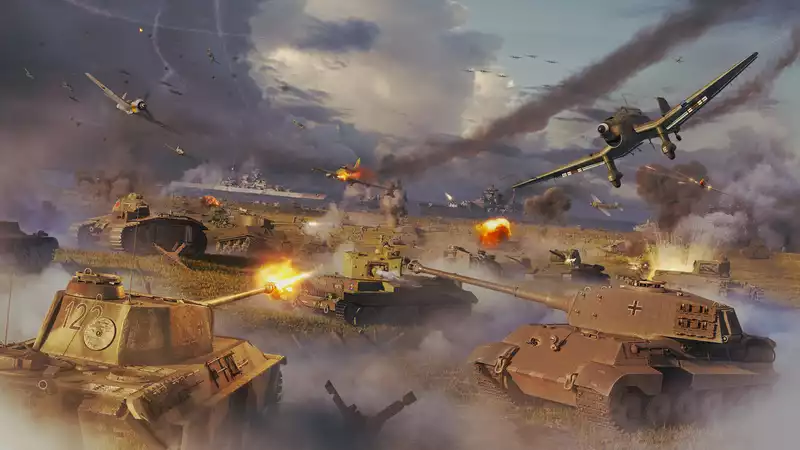Hex wargames don't come much better than Panzer Corps 2. This is the latest in the series of historical wargames, in which you lead a Panzer Division through World War II in the single-player campaign, or take on either the Axis or Allied Powers in competitive or cooperative scenarios. Panzer Corps 2 spends more time and effort to make it look good than any other game, with models and skins to represent almost any combination of camouflage and era. The customization is also superb, with fully modular armies and unique general characteristics that allow you to build your own play style and show off your strengths in branching scenarios.
What it doesn't do is innovate. Despite some important improvements, this is the same kind of game as its predecessor.
Panzer Corps 2 is a game with a nearly 70-year tradition. It is a classic hex-and-counter wargame. There are units, units have stats, you play alternately, stats clash, and someone wins. It's actually very complicated; Panzer Corps 2 is a game that knows the difference between PzKpfw IV Ausf. B and E, and between engineers and grenadiers, and it wants you to know and care.
If you don't want to know the difference between a Sturmgeschutz and a Panzerkampfhagen, don't panic, turn and move quickly in the opposite direction. This is not your game, and unlike other wargames (which are good games, I stress), Panzerkorps 2 is not a simple "more is better" situation.
Sometimes it takes the fun out of the game. It takes time to learn and memorize the differences between all tank units, and the undo button is used to its limits. Which tanks are for anti-infantry? Which new tank destroyer should I upgrade my older units to use? Will my bomber units need anti-naval capability for this mission? Time consuming. Sometimes it feels like a chore when the real purpose of playing this game is an interesting and deep tactical situation.
Also giving life to this game is the same attention to history. It is not clear that the wheel needed to be reinvented in this genre. The fantasy of leading an army is here in every detail, from dealing with the limited requisitioning of new tanks to balancing limited resources.
Commanders can choose certain characteristics, such as focusing on blitzkrieg or concentrating on infantry operations. I found the "Industrial Connections" characteristic deeply interesting. This characteristic provides a limited supply of experimental equipment, allowing new tanks and guns to be tested in actual combat before they become available to the public. Then you get that equipment and a specialized commander to fight as the Axis in 60 World War II scenarios, starting with the invasion of Poland. Some are ahistorical. Occupy Moscow. Land the Panzers on Long Island. Bomb Washington, DC.
In-mission troop maneuvering is engaging and dynamic. If you want to attack fixed targets, maneuver warfare is the best way to do it. Surrounding the enemy and disrupting their supply is an important weapon, but it is not the only one. I have found that key elements of historical strategy, like sieges, are reflected beautifully in the game. While some objectives were easier targets or assaults were simpler, there were often conflicting priorities. Many times, we had to make detours to occupy a new airfield. Occupying a railroad base might allow reinforcements to be sent to the front more quickly.
The game's normal difficulty also has a brilliant undo button for mid-turn mistakes, and the scenarios are quite friendly to being interrupted. This is a good thing, because some of the longer scenarios can take two or three hours to complete, and on the harder difficulty levels, a small mistake can easily lose that effort. Once, after several hours of strategizing and failing to capture Paris, I had to get up and walk away for a while.
The infrastructure surrounding the mission is very bare bones. It is only separated by a splash screen. You are lucky to see a vague one-sentence mission description when choosing which of the next branches to proceed on. While this is a fun campaign, it is difficult to plan when you cannot see the next mission map or check the military formation as you make your decision.
Panzer Corps 2 is ultimately a fun, robust, and fairly clean wargame. There is much to recommend it, but nothing particularly outstanding. Despite all this, it falls into the trap that many wargames have fallen into over the past two decades: complexity over substance. Those seeking a strong multiplayer experience will be subjected to the whims of the community to elaborate on the handful of maps in this game. While a great deal of effort is put into tooltips, hotkeys, and an accessible user experience, the game is densely packed with rules that can only be adequately explained in the manual. However, they are unclear or underdeveloped in crucial areas.
The campaign mechanics are interesting, but there are many traps into which the uninformed player can easily fall. Panzer Corps 2 brings the classic turn-based wargame into the new decade, at least outwardly. After all, it is still a classic turn-based wargame.
.

Comments